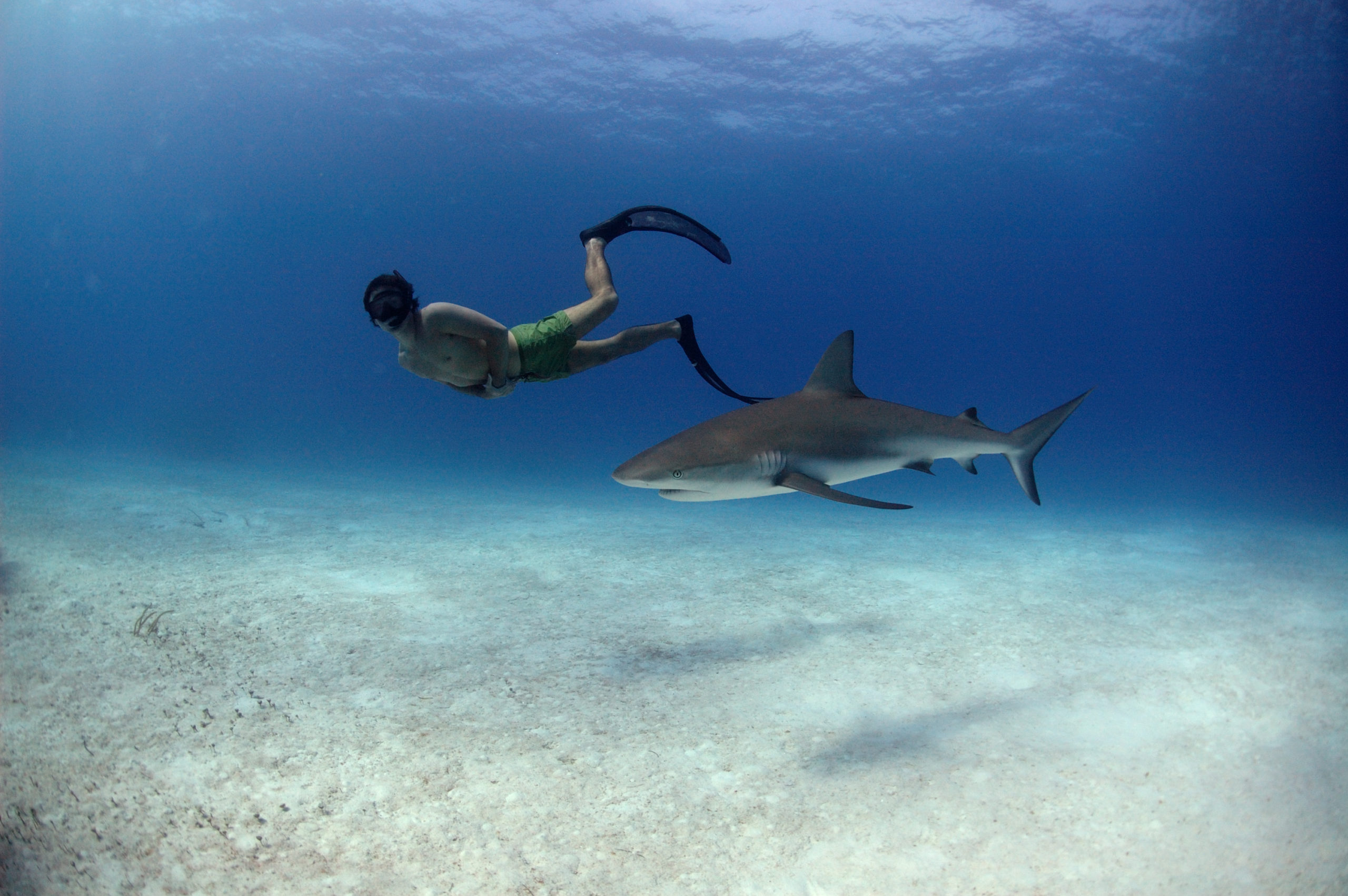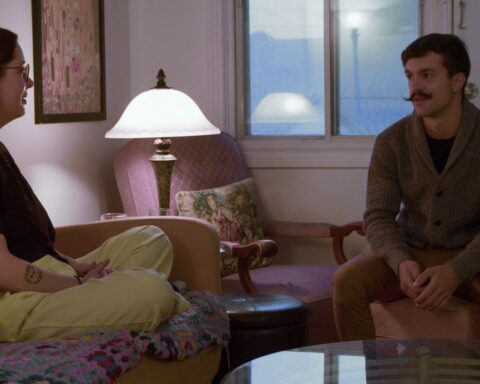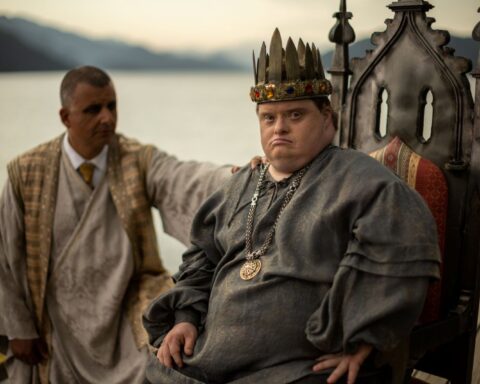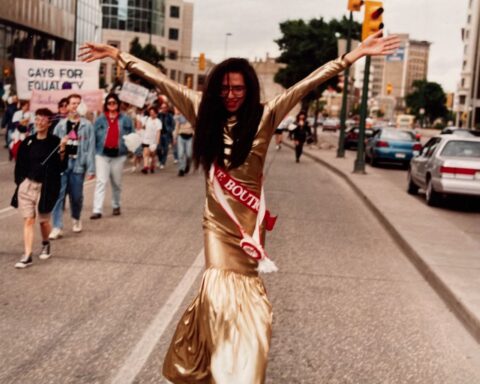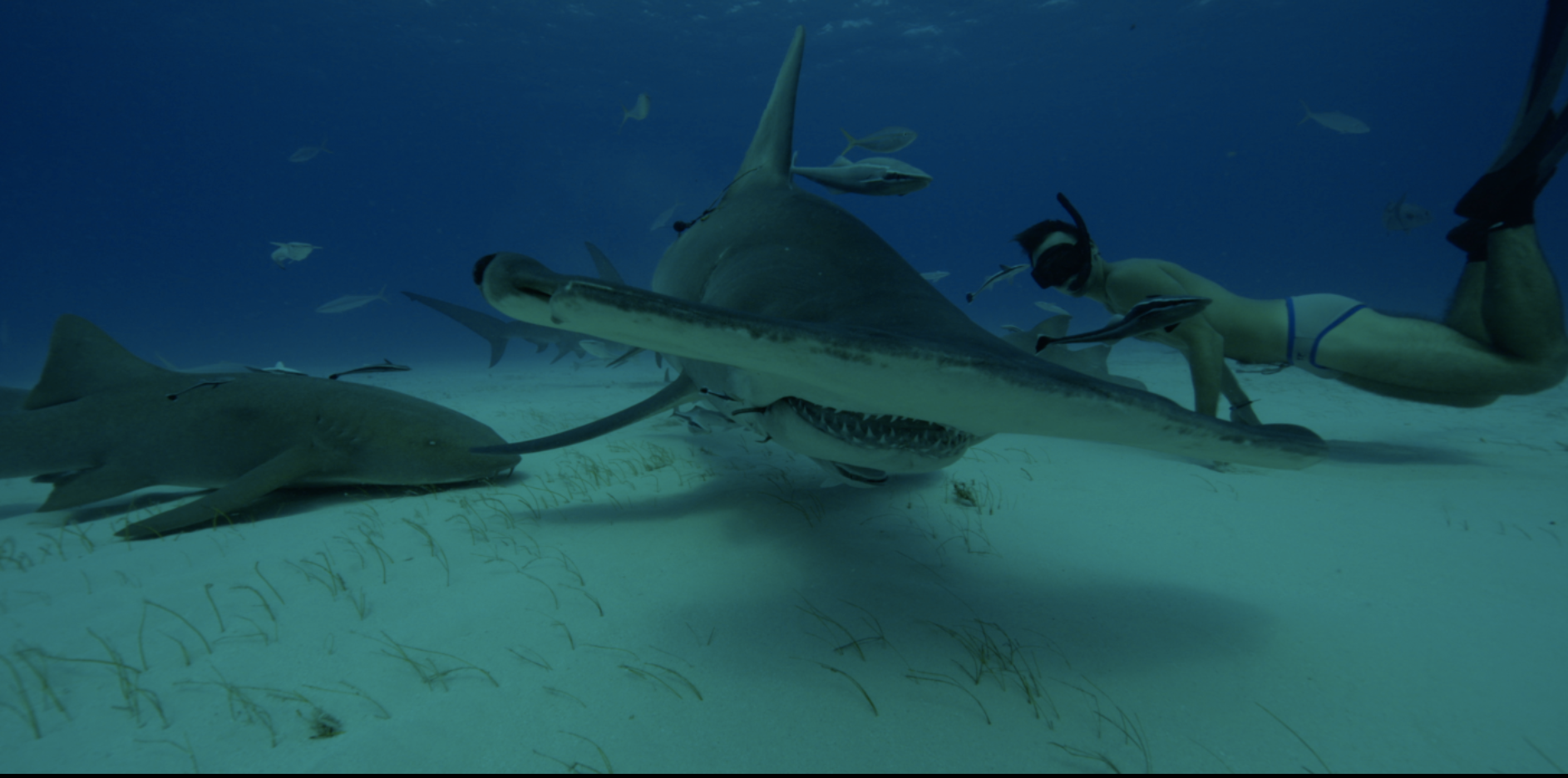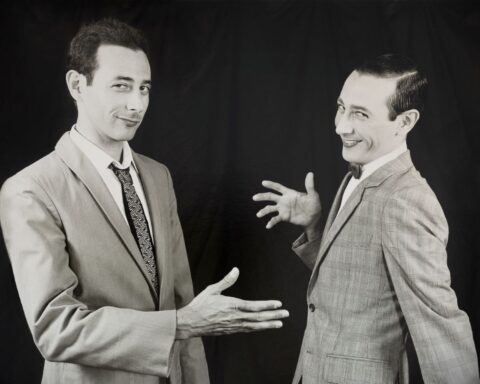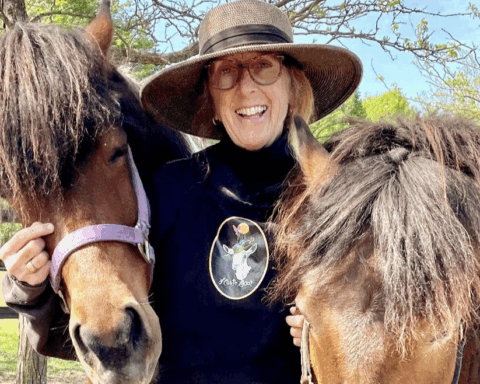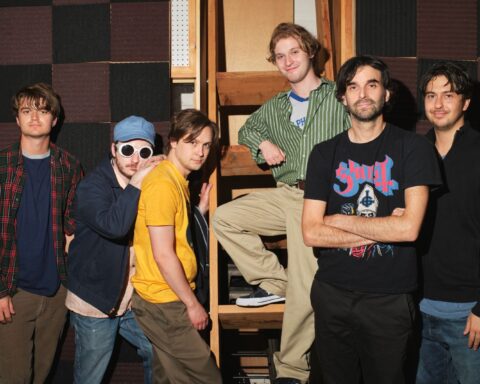Sturla Gunnarsson has an illustrious career as the former President of the Director’s Guild of Canada and as a drama and documentary filmmaker. Gunnarsson’s work has earned him an Oscar nomination (After the Axe), as well as winning Emmy (Where is Here?), Gemini (Da Vinci’s Inquest) and Genie (Final Offer) Awards. His recent role as creative consultant on the late Rob Stewart’s Sharkwater Extinction is notable for his dedication toward helping a fellow filmmaker see his vision through to completion.
POV editor Marc Glassman, and POV contributing author, Michael John Long, spoke with Sturla Gunnarsson at the POV office in late July, 2018.
This interview has been edited for brevity and clarity.
MG: Marc Glassman
ML: Michael Long
SG: Sturla Gunnarsson
ML: As creative consultant, at what point did you enter the process of completing Sharkwater Extinction?
SG: A few months after Rob died, his parents asked if I was interested in taking it over. I declined at that time. I was too busy and didn’t know what they had. They ended up getting Nick Hector involved. Nick went through the hundreds of hours of footage and really came up with the concept [of how to complete the film]. Nick read all of [Rob’s] journals and interviews. His concept was to make it Rob’s film.
Nick would scour the interviews Rob had done for any artefacts of his voice talking about the issues. The idea was to create a cinema verité film of Rob’s journey, and knit it together with Rob’s voice. I really jumped in at the assembly stage. Nick had the first cut together. I really think he had the film sorted by the time I got in. I played the role of the filmmaker in the room, in that dialectical process, but Nick created the parameters and conceptualized it.
MG: The diary-style approach is impressive. Was it Nick who came up with that idea—essentially a behind-the-scenes look?
SG: We set out to finish Rob’s film, and in the process of doing that, it became a film about Rob. That’s the metamorphosis that took place. If I’m going to take credit for anything, it would be for that aspect. I don’t make advocacy films. I have nothing against them—I just don’t know how to do that. I make character films. I think what I brought to the mix was the character’s journey: focusing it on Rob, not on the issue.
There’s an old saying that it’s far more interesting to make a film about a man with an idea, than it is to make a film about an idea. My part was to help shape the dramatic narrative. The animating principle, for me, was to fight for what’s beautiful. I do care about sharks, but for me the idea of a young idealistic person pursuing and fighting for what’s beautiful, with a kind of idealism and optimism, and paying the ultimate price for it, was a strong narrative spine.
MG: Mike and I both noticed early on that there’s foreshadowing and talking about death.
ML: It comes up in the Costa Rica section, and then again in the Los Angeles section.
SG: We gave each of Rob’s friends one moment of reflection. Most people won’t notice because it shifts to a reflective past-tense in three places. Each of his three friends look back, knowing what they now know, so that becomes kind of a foreshadowing.
MG: It gives you an emotion when you’re talking about character and narrative. Rob always had to think about his death or being at risk.
SG: Yes, and he was also young and young people think they’re immortal, as we know having children, but I think that’s a big part of the theme.
ML: Can we come back to the hundreds of hours of footage? I’m curious what was left on the proverbial cutting room floor? Were there entire cities, or countries, or expeditions that were unused?
SG: I wouldn’t say that there was a lot of unused material. Nick, going through the material, has a dialectical process. He’s looking for scenes with enough material or enough [coverage] to shape a scene; and then he’s looking at what all these scenes tell him, and therefore, what do I need to tell a story. I think most of the material is included but there’s lots and lots of material from the shoots that weren’t.
ML: Was there anything shot after the fact?
SG: The only thing that was filmed after the fact was the search, which I shot. We went down to Florida and we knew that we needed. Up until that moment [‘The Last Dive’ section], the film had been shot by Rob because it’s Rob film. He’s the filmmaker. After he died, we needed to tell the story of what happened next, but we didn’t have the material to support that. We could have used stock footage, but we wanted it to be beautiful; we wanted to have scale.
ML: Since we’re here, why don’t we talk about ‘The Last Dive’ section? Would you talk us through that creative process? We thought it was touching and classy, with the aerial footage of the search, and the overlaying news reports.
SG: Nick created a section ahead of time, using footage that Rob had shot, but our feeling was that it was a little bit too compact; it needed a little bit more room to breathe and to be expansive. We went to Florida and worked with the Florida Coast Guard. We arranged to go shoot a rescue exercise. We had our boat, drone operator, and camera operator, and we went out with them on an exercise. As always with documentary, it’s a sort of “art of the possible.” All we had confirmed going down was a ship, but we knew that there was the possibility of more, and through the usual wheeling and dealing that documentarians do, we ended up with a cutter and a response boat and fixed-wing plane and a chopper. Then knowing that all of these guys are young, once you get past the public relations person and you’re dealing directly with them, and telling them you’re making a movie, they would [be willing to go the extra mile]. We have that one shot that has all four elements: airplane, chopper, cutter and boat, all in one frame, with the sun rising behind it. The basic underlying idea was that we didn’t want to illustrate what had happened, but rather create complementary images or poetic images that would support the idea of a passage of time, the churning of emotions, and ultimately the transition of the soul.
MG: It would have been easy to try to go for emotion but what you do is more restrained and classical and philosophical.
SG: You know what they say, you don’t want to see actors cry, you want to see audiences cry. The effect you want is in the audience, not in the frame.
MG: Let’s go back to Rob’s intentions. I guess Nick had looked through the diaries and so forth; what do you think Rob wanted to do with Sharkwater Extinction? Obviously, it was revised into something else.
SG: His concern, what motivated it, was that he had made a film eight years before that did everything he hoped it would do. It had a huge impact internationally, it resulted in legislation in over 50 countries, I think, so he sensed that he had made a film that had changed the world by giving the sharks a little breathing room. He discovered that, in fact, sharks were disappearing at an increasing rate. That’s what really launched [this] film for him—the journey to see if shark finning is [really] banned and why they are still being hunted and killed.
ML: An interesting thing about Rob, which played out in the film, is the way he inspired so many people; and in particular, young filmmakers like Jonah Bryson and Julia Barnes, some of whom have now made films and credited Rob for his help. Can you speak about the diver activists in the film who are along for the ride and helping Rob play out his journey?
SG: Yes. Reggie, Brock, Will, and Madison Stewart. With Reggie and Madison, these are people who were inspired by Rob and following in his footsteps.
ML: I am curious if we will see work from them down the road?
SG: I have seen stuff from them, so absolutely yes. In the process of getting those voiceovers, I got to know them and talk to them. For example, to get the story from Madison, she says while crying that she was lucky in spite of all this, that she was still able to feel so deeply for an animal. They’re all activists and out there doing their own projects.
MG: Going back to that diary idea, I was impressed by how much of an investigative journalist Rob was. He really would go in deeply, especially in the Costa Rica scene, but in others as well. You can really feel that Rob was not only a very good filmmaker, with a sense of visuals, but that he did have an eye for figuring out what’s going on politically, to be able to uncover all those shark fins, multiple times. He essentially cracked cases. Those are obviously high points in the film, but I was wondering if that was surprising to you, to find this footage?
SG: I didn’t know Rob, so I didn’t have a sense of what he would or wouldn’t do. Nick and I are filmmakers, so we follow the story. When you find material of Rob chasing his story and finding what he’s looking for, of course, you’re going to use it because it’s good material.
MG: So why do you think the Stewarts approached you?
SG: Rob had admired Monsoon, and had spoken to his parents repeatedly about it. When they were at a loss with all this material, and they wanted to finish the film, they called who Rob would have.
MG: You’ve known Nick for such a long time. Would you speak about that relationship, which I am guessing goes back to when Nick was working with Allan King?
SG: The first time I worked with Nick was on Air India which was quite a while ago. Nick is the complete filmmaker: he’s incredibly patient, he has a wonderful gut feeling for material, and he knows how to take raw material and massage it to life. Our working process is very much along the lines of me being the impatient one. I live in the documentary and drama worlds, and I see documentary through a character-based narrative prism. I am always the one who ends up saying, ‘I don’t care about the facts, tell me what’s going on with the character.’ Nick tends to build it patiently and puts it together, and then I come in and shake it down until it’s solid from the perspective of story. [Read more about Sharkwater Extinction in our interview with editor Nick Hector!]
MG: Did you ever meet Rob? I had a terrific experience meeting him once, which was at Planet in Focus, during an on-stage interview with him.
SG: I heard about his death on the news. I didn’t know him, but when I heard about his death, I was shocked. It’s horrible to hear about any young person dying. A young filmmaker dying, in pursuit of his film, is shocking but that was the extent of it until his parents contacted me.
ML: I also met him at the same Planet in Focus screening and on-stage for Revolution, and I felt the same uncanny impact in his ability to capture an audience and inspire people.
MG: In the filmmaking process, you get totally immersed. Did it matter whether you had met him before or not? What was your reaction to who he was, through his presence on camera, as a documentary character?
SG: That’s a good question. I recognize myself in him. I responded to the kind of obsessive filmmaker that he was; to the person who is living and breathing filmmaking; to the person who is committed to an idea passionately. He was a young man who was willing to put everything on the line for his filmmaking. I found that very appealing, and I also found that his love for the ocean was very appealing because I am an ocean person as well.

_Sharkwater Extinction_ director Rob Stewart
Sturla Gunnarsson




